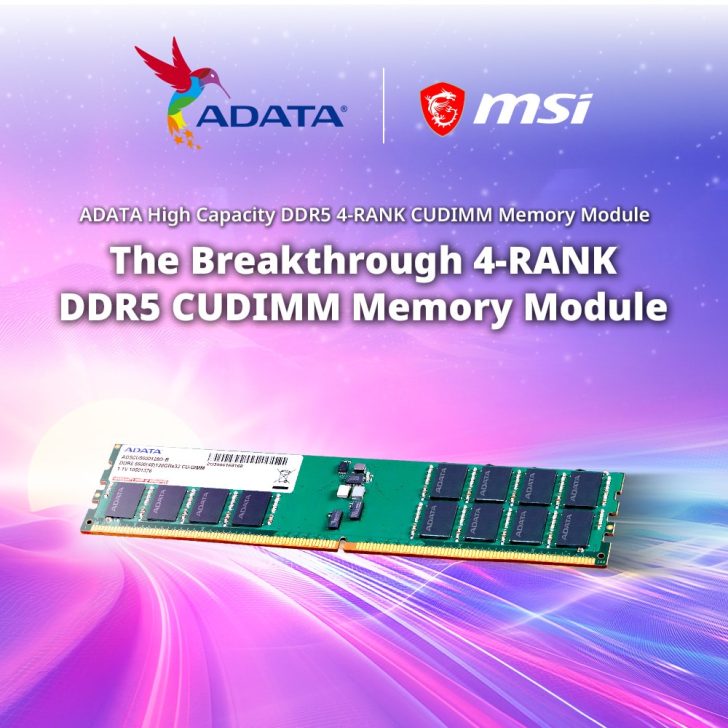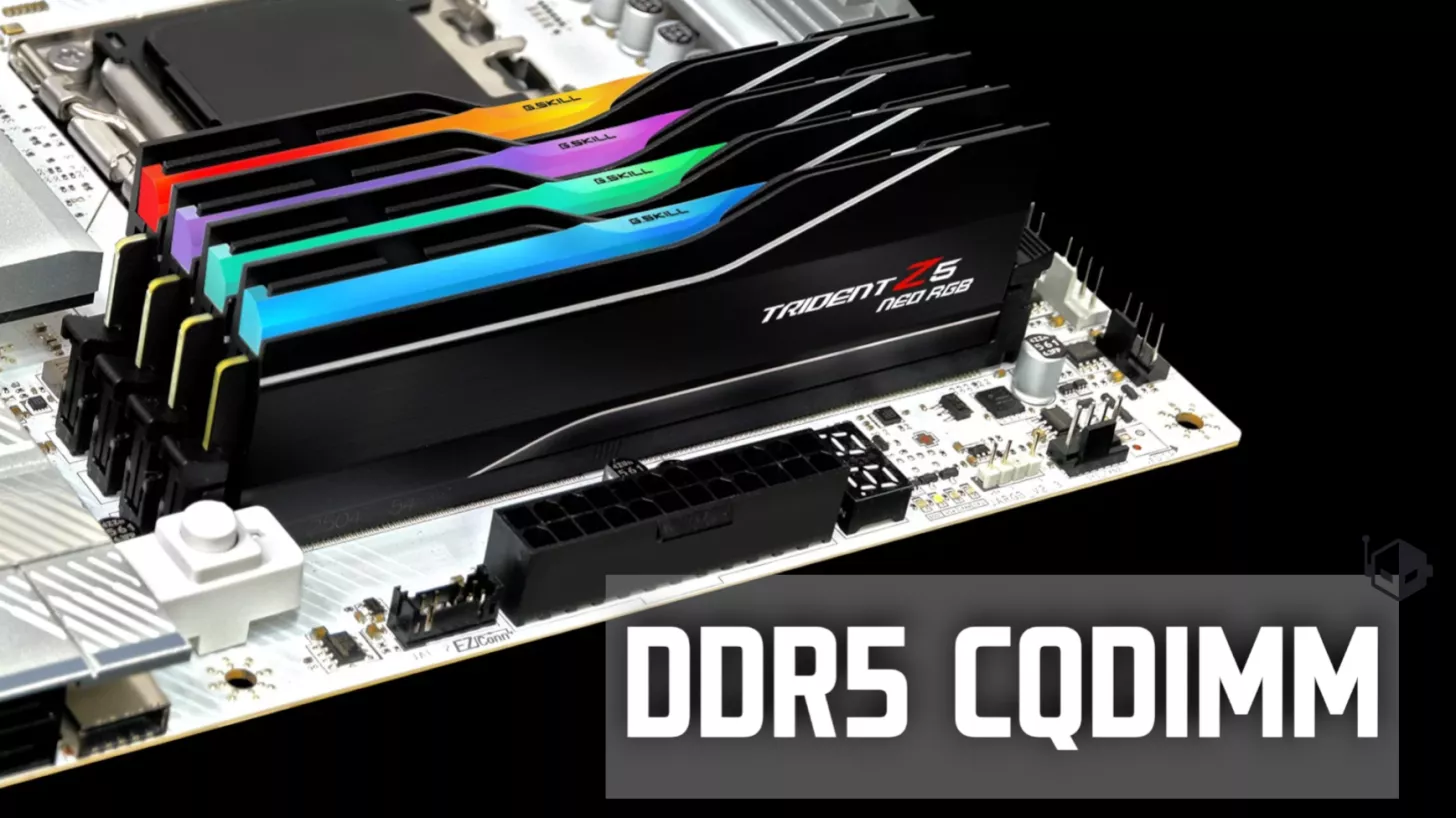Exciting developments are on the horizon for DDR5 memory technology. New advancements are set to redefine what future platforms can achieve in terms of memory capacity. The CQDIMM standard, currently in development by JEDEC, aims to bring higher capacities to DDR5 CKD memory modules, promising a significant leap forward in performance.
CQDIMM: The Next Evolution in Memory Modules
Recent updates in the memory module industry have seen MSI and ADATA partner up to enhance existing CUDIMM designs. This enhancement involves a transition from 2-Rank to 4-Rank configurations, boosting memory capacities to an impressive 128 GB per module. This upgrade essentially doubles the current platform capacities while maintaining rapid CKD execution. Furthermore, reports suggest that other major players like Gigabyte and ASUS are also pursuing 4-Rank DDR5 memory module compatibility on both current and future motherboards. This support is presently focused on high-end OC models such as MSI’s Dual-DIMM Unify X, Gigabyte’s Tachyon ICE, and ASUS’s Apex, but broader motherboard support is anticipated soon.

Intel’s Arrow Lake and the Future of CQDIMM
The introduction of the CQDIMM standard by JEDEC is expected to offer 4-Rank CKD support, with the “Q” standing for Quad. This new standard is designed to enable modules to maintain speeds of 7200 MT/s, a feature that upcoming platforms will support natively. Intel’s Arrow Lake-S Refresh, set to debut on both desktop and laptop platforms early next year, is poised to be the initial platform to benefit from the CQDIMM DDR5 standard. However, the cost of 128 GB memory modules might be steep due to the current state of the memory market.
Looking Ahead: Broader Adoption of CQDIMM
As the Arrow Lake-S Refresh paves the way for this new memory standard, it also serves as a proving ground. Broader adoption is anticipated once market conditions stabilize, potentially coinciding with the launch of Nova Lake-S CPUs in the latter half of 2026. With CES 2026 approaching, more information about this promising technology is expected to surface soon.
